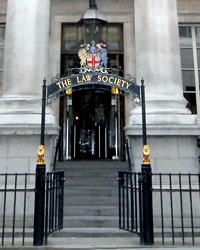The Law Society’s ruling council yesterday agreed to spend £61m over four years on new IT systems for both its representative and regulatory arms – although it is forecasting that savings generated will bring the net cost down to £37m.
Chief executive Catherine Dixon told Legal Futures that Chancery Lane had learned the lessons of past IT failures and there would be “robust governance processes” around the work.
We reported recently that the society had to write off £5.1m in the last financial year after work on a new regulatory database was ditched. This came on top of the £7m lost through the collapse of Veyo.
Papers before yesterday’s council meeting said that the Law Society as a representative body and the Solicitors Regulation Authority had each developed “IT strategies and roadmaps” and now plan to “proceed with the implementation of these roadmaps in order to address the very significant deficiencies in the IT on which both bodies rely”.
The total gross capital investment between 2015/16 to 2019/20 was estimated at £61m, with the net cost being £37m after accounting for “the realisation of programme benefits”.
The council was told that the investment was front-loaded, with up to £30m being spent in 2016/17. Some £13.8m will be funded from practising fees, with the rest paid for by any under-spend in the 2016 capital budgets and then reserves.
The reserves will be replaced by future fee collections in such a way that the annual capital investment budget will remain flat, “meaning that towards the end of the programmes sums in excess of in-year expenditure will be collected and applied to restore the level of reserves”.
Once the new systems are up and running, the level of funding for capital investment collected through annual fees should fall.
The papers said: “The full implementation of the roadmaps will result in the SRA and TLS having separate IT systems, specifically designed to support the different business needs of each body, supported by separate IT teams in each body. As a result it is planned that not only will services be more secure, resilient and flexible but that IT running costs for both SRA and TLS will reduce significantly.
“In addition, the improved services will enable the realisation of business, customer service and cost benefits in both organisations.”
Speaking after the council approved the plans, Ms Dixon acknowledged that the society has stumbled several times over the years with IT projects – such as the new system that was to be delivered under Project Engineer more than a decade ago – but said: “We can’t fix the past, but we can learn from it.”
She explained that a ‘gated’ approach would be taken to the programmes, meaning that each part would have to be delivered before the gate would open and work could begin on the next part.
Ms Dixon promised that there would be “robust governance processes” around the programmes, although the part of the council meeting about them was held behind closed doors.
The council approved the group’s net funding requirement – the amount that will be raised from individual and firm practising fees – of £99.9m for 2016/17, down from £105.8m last year due to over-collection in that period, the use of some reserves, and reductions in the levies of the Legal Services Board and Legal Ombudsman. Further, both the Law Society and SRA have reduced their demands for the coming year.
Subject to it all being approved by the Legal Services Board, this should mean a fall in the individual practising certificate fee from £320 to £290 – with £40m being collected in all from individuals, down from £43m – and the amount collected from firms also falling from £62.7m to a shade under £60m.

















Leave a Comment